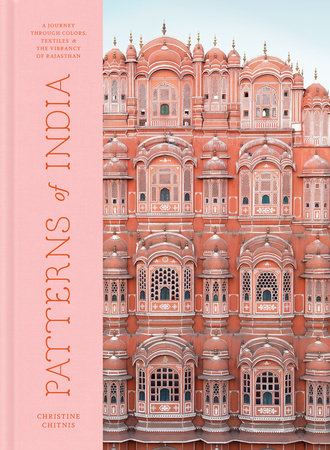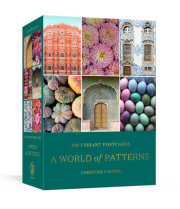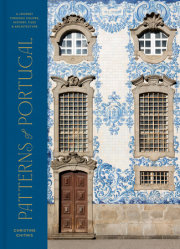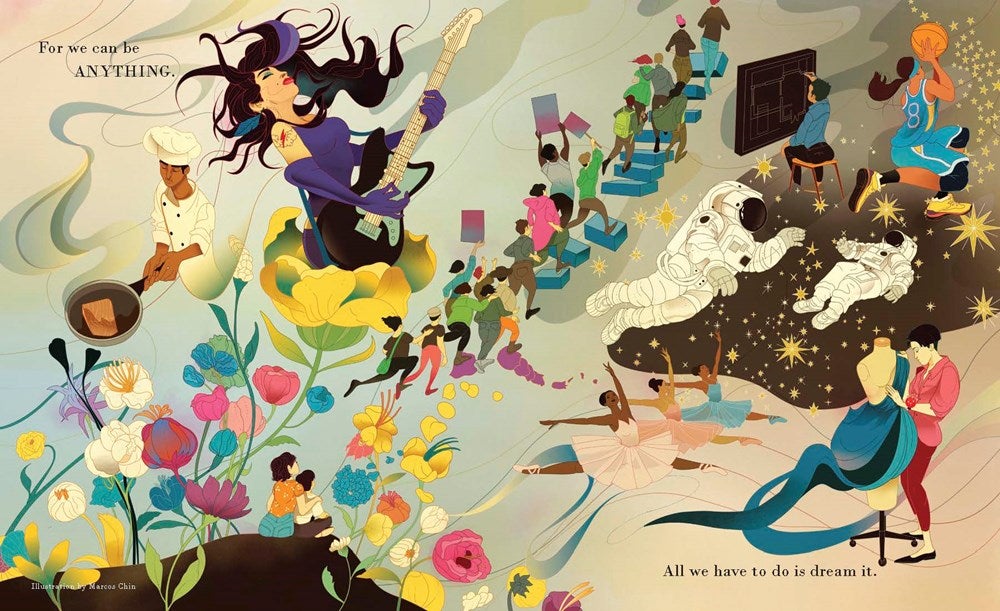Introduction
While it is impossible to encapsulate a country as vast and culturally diverse as India, there is a tie that binds, weaving from the pink-tinged architecture of Jaipur to the shimmering Golden City of Jaisalmer. Color—in rich, vibrant hues defines every aspect of life in India, be it religion, politics, food, art, or dress. As a photographer, I was instantly drawn to its unique color wheel and especially intrigued by the way the same hues seem to echo throughout the country. The fuchsia draping fabric of a sari matches the vibrant chains of rose offerings at the
mandir (Hindu temple). Burnt orange towers of spices in the marketplace are reflected in baskets of marigolds lining flower stalls. A field of dyed indigo fabric drying in the desert heat resonates with the brightly painted blue buildings of Jodhpur. Color and pattern exist in a symbiotic relationship. Pattern, when it is applied with detail and precision, can convey meaning and tell a story. Decorative motifs range from simple compositions of dots, lines, rings, and geometric patterns to more complex and meaningful designs that include elements drawn from village life and religious texts. This dynamic combination of color and pattern is most striking in the vibrant northwestern region of Rajasthan, India’s largest state.
Prior to India gaining independence from Great Britain in 1947, Rajasthan (Land of Kings) was a region comprising more than twenty princely states, a feudalist desert stronghold of royal affluence. The Rajputs, who rose to prominence in the area as early as the seventh century AD, were fierce warriors and zealously independent Hindus, and they successfully fended off waves of foreign invaders. When the imperial power in neighboring Delhi shifted in the sixteenth century to Akbar, the powerful Mughal sovereign who would gradually enlarge his empire to include nearly the entire northern Indian subcontinent, many Rajput rulers formed military and marital alliances with him. By acknowledging Akbar as emperor, they were allowed to retain their ancestral territories. The era of stability and creativity that followed this fusion of Rajput and Mughal heritage, coupled with growing wealth and consistent court patronage, had a great impact on, and is reflected in, Rajasthan’s art and architecture: floral and organic patterns, wall paintings, and fluted pillars are trademarks of the Rajput style; stone inlay filigree, mirror-glass mosaic work, geometrical patterns, and the use of arches and domes speak to the Mughal influence.
Rajasthan is home to many of India’s famous landmarks; featured in this book are the Hawa Mahal, the Jaipur City Palace, the Amer Fort, the Mehrangarh Fort, the Umaid Bhawan Palace, and the Udaipur City Palace. Despite its bustling, modern cities and royal grandeur, more than 80 percent of its people live in rural areas and make their living through agriculture or livestock herding. Not far from the cities are villages seemingly untouched by modern times, where traditional arts and handicrafts, such as hand block printing, embroidery, and weaving, are kept alive.
My own travels through India have been deeply influenced by my husband Vijay’s familial connection to the country. Mangalore, a port city in the southwestern state of Karnataka, was home to Vijay’s mother’s family; his father’s family was from Kolhapur on the banks of the Panchganga River in the western state of Maharashtra. Both of his parents were raised in Bombay, but they spoke different languages and were raised with different religions—his Hindu father spoke Marathi and his Catholic mother spoke Konkani. Their common language was English. Soon after their marriage in 1964, they immigrated to England and then to Canada, where my husband was born and raised. Vijay’s parents didn’t teach him about their homeland’s languages, religions, or customs. Being raised in an immigrant family with no strong connection to his parents’ history or culture, he felt a growing void as he tried to reconcile his upbringing as a minority in Canada with his Indian heritage. Searching for the missing pieces of his identity, he left home in his twenties and traveled to India. He settled in the northeastern state of Assam, just south of the eastern Himalayas, and lived a simple, monastic life. He immersed himself in the languages and culture that had eluded him during his childhood: he learned to speak Hindi and Bengali, and began his study and practice of Hinduism. After nearly a decade in India, Vijay made his way back to Canada in 2001, and eventually to the United States, where we met, married, and started our family.
I traveled to India for the first time as a newlywed and have returned almost every year since: pregnant with my first son and, most recently, with my daughter; when my sons were toddlers and when they were school age. We are raising our children, Vijay, Vikram, and Meera, to be proud of their Indian heritage. They have had the privilege of exploring India and their ancestry with joyous hearts and adventurous spirits, while Vijay and I work to expand their cultural knowledge. My family enjoys sightseeing during our travels, visiting palaces, forts, and museums, but we spend the majority of our time experiencing everyday life in markets, temples, and friends’ homes. This intimate perspective is what I hope to reflect in this collection. To be a traveler is to pay heightened attention to the ordinary, and that is what I strive to celebrate in my photography: the ordinary moments that feel extraordinary.
This photographic collection offers a glimpse into Rajasthan’s rich use of color and pattern; it is not meant to be a comprehensive historical or cultural study of the region’s arts and crafts and it would take many lifetimes to explore a country as vast as India. Indian art forms are complex and layered subjects. Because of the diversity of the population—across regional, geographical, and religious divides—there are myriad interpretations and representations of symbols and colors. But as I combed through my archives trying to choose photographs to include in this book, one thing became clear to me—very specific color stories were at play in Rajasthan, and patterns occupied a central role.
No matter where we live, our lives are filled with color and pattern, but as we move through the world at an increasingly frenzied pace, we often fail to notice them. I hope this collection reminds you to look for the beauty that surrounds you, whether it is in the form of a magnificent architectural feat or a humble household object.
Copyright © 2020 by Christine Chitnis. All rights reserved. No part of this excerpt may be reproduced or reprinted without permission in writing from the publisher.
























